
What is a community forest?
Community forests in Namibia are self-governing entities that are legally recognised by the Ministry of Environment, Forestry and Tourism (MEFT). These community organisations manage plant resources in specific areas within the communal lands of Namibia, with the dual goal of protecting their resources and improving livelihoods. Community forests receive support from the Directorate of Forestry and the Namibian Association of Community Based Natural Resources Management (CBNRM) Support Organisations (NACSO).
Forestry in Namibia falls under the Directorate of Forestry within MEFT. The Directorate’s mandate was expanded considerably in 2008 to cover the entire country and included integrating newly established community forests into the overall programme. Establish community forests transfers plant resource management rights to local communities in accordance with the Forest Act of 2001.
Management of vegetation and habitat complements wildlife management in communal conservancies and thus contributes to a more comprehensive CBNRM strategy. Several community forests cover the same areas and communities as communal conservancies, thus integrating these aspects of CBNRM. Community forests differ from conservancies in one fundamental respect, however: all residents within a community forest are members of the forest, and have member’s rights, whereas not all residents of conservancies are members. There are currently 43 registered and emerging community forests in Namibia, covering around 72,537 km2 within ten regions in the northern part of the country, 95% of which overlaps with communal conservancies.
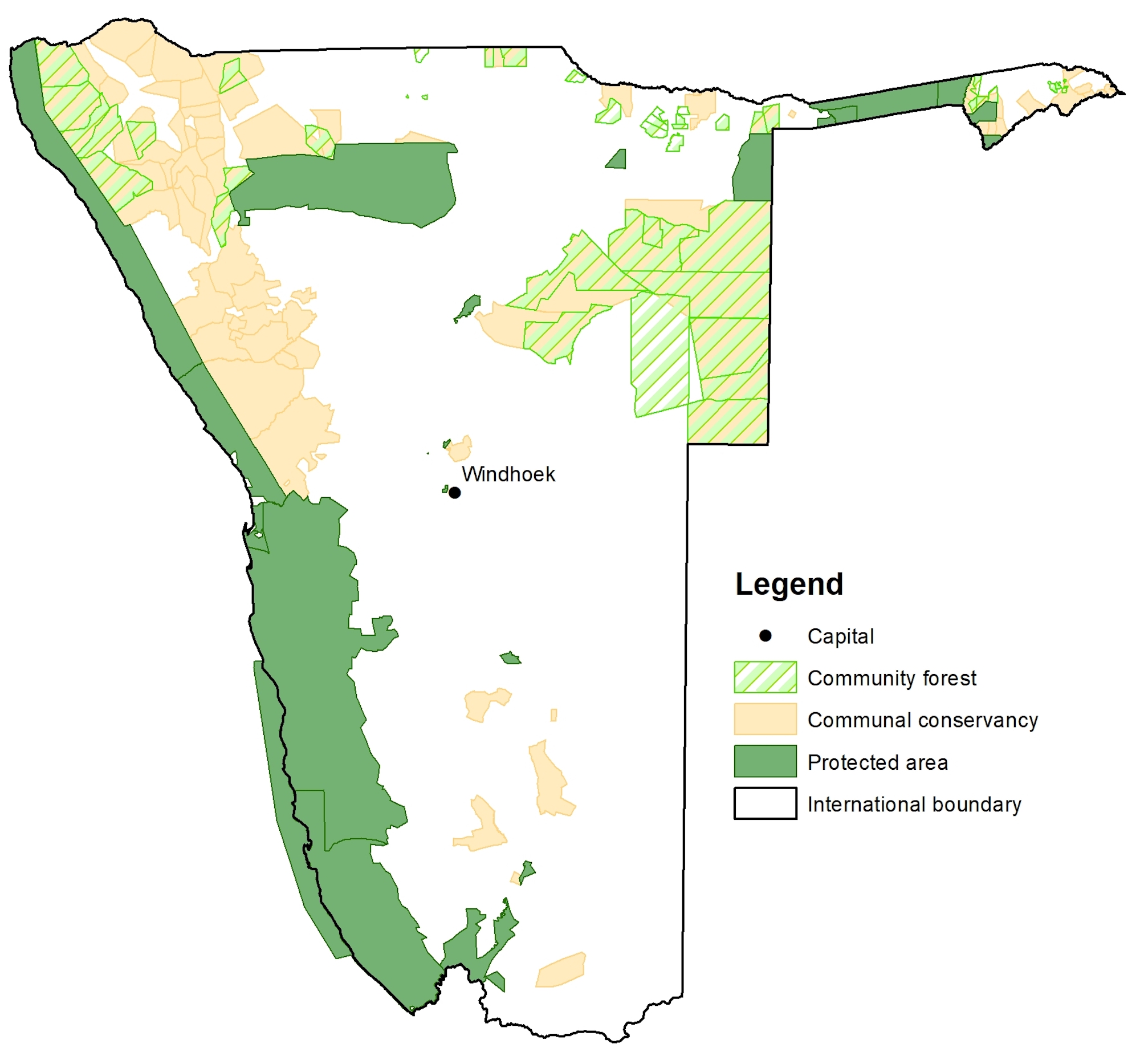
How do community forests work?
Each community forest has a constitution and elects a management committee. This is an opportunity for communities to control the use of their own resources such that future generations can continue to benefit. Forest committees exercise their rights by issuing permits for plant utilisation based upon annual monitoring. They also control grazing by livestock in forest areas, which provide a valuable fodder resource in times of drought. Grazing permits may be issued subject to the sustainability of graze and browse in forest areas.
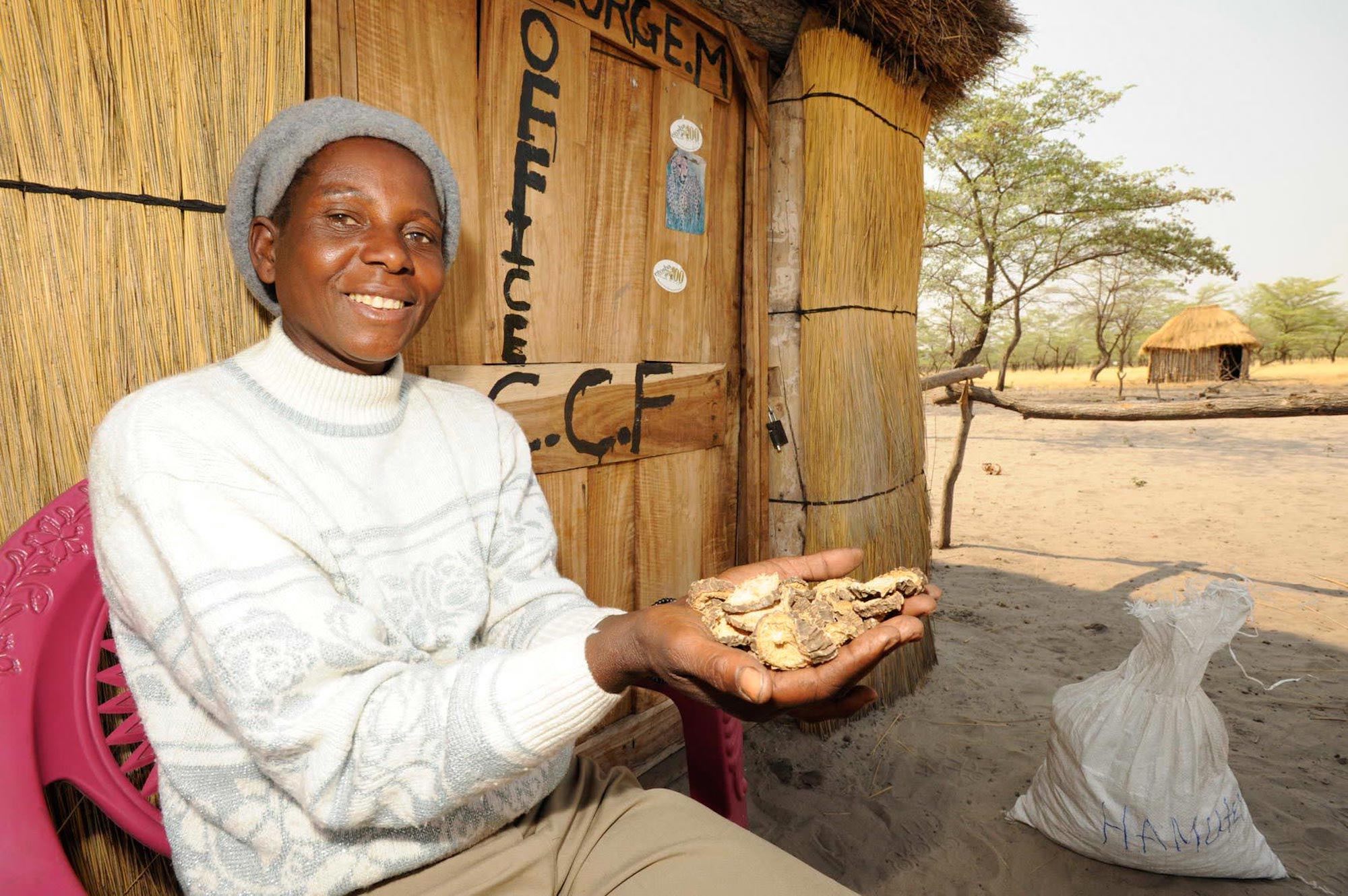
Community forest management is guided by the principles of sustainable management – to maintain and improve the resource base – and sharing benefits among all local residents. Hence, community forests empower local people to take responsibility and to become actively involved in forest management, thereby increasing the value and benefits of forest resources to local people.
A principal source of income from community forests in the north-eastern part of the country is the commercial extraction of Namibian hardwoods (e.g. Zambezi or African teak (Baikiaea plurijuga) and the kiaat tree (Pterocarpus angolensis)). The Directorate of Forestry calculates an annual allowable off-take
, based on an inventory of timber resources, which is binding for a 5-10 year period. Community members themselves conduct the inventory, as they know their areas intimately. Technical guidance is given by the National Forestry Inventory (NFI) Department, which analyses the data and compiles inventory reports. These then form the key components of the management plan.
Other forest products managed by community forests include the devil’s claw tuber (Harpagophytum species) and resin from Commiphora plants that are used to produce medicines and cosmetic products, respectively. Marula and the large sourplum (Ximenia caffra) tree produce fruits that have nutritional and economic value, while mopane trees provide firewood and habitat for mopane worms. In some cases, the products are sold to an international market whereas other products are used locally.
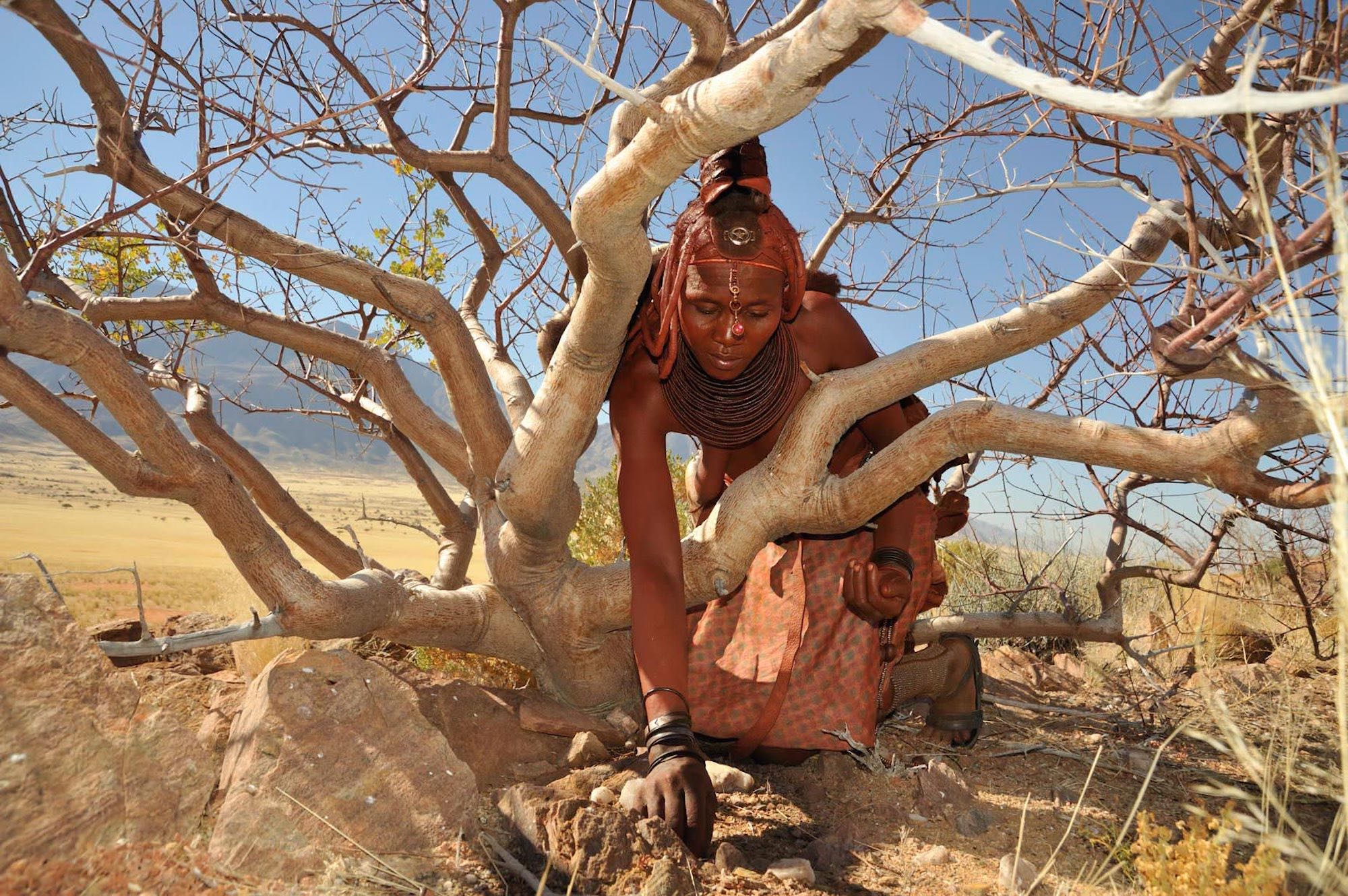
The principle of an inventory mirrors the annual game counts carried out in communal conservancy areas in the north-west and north-east in order to set quotas for the sustainable use of game. In community forests, WWF-Namibia coordinates an annual vegetation survey in selected areas to inform the allowable off-take for each year. The information collected during these community based monitoring activities is collated into the Namibian CONINFO database.
Why are community forests important?
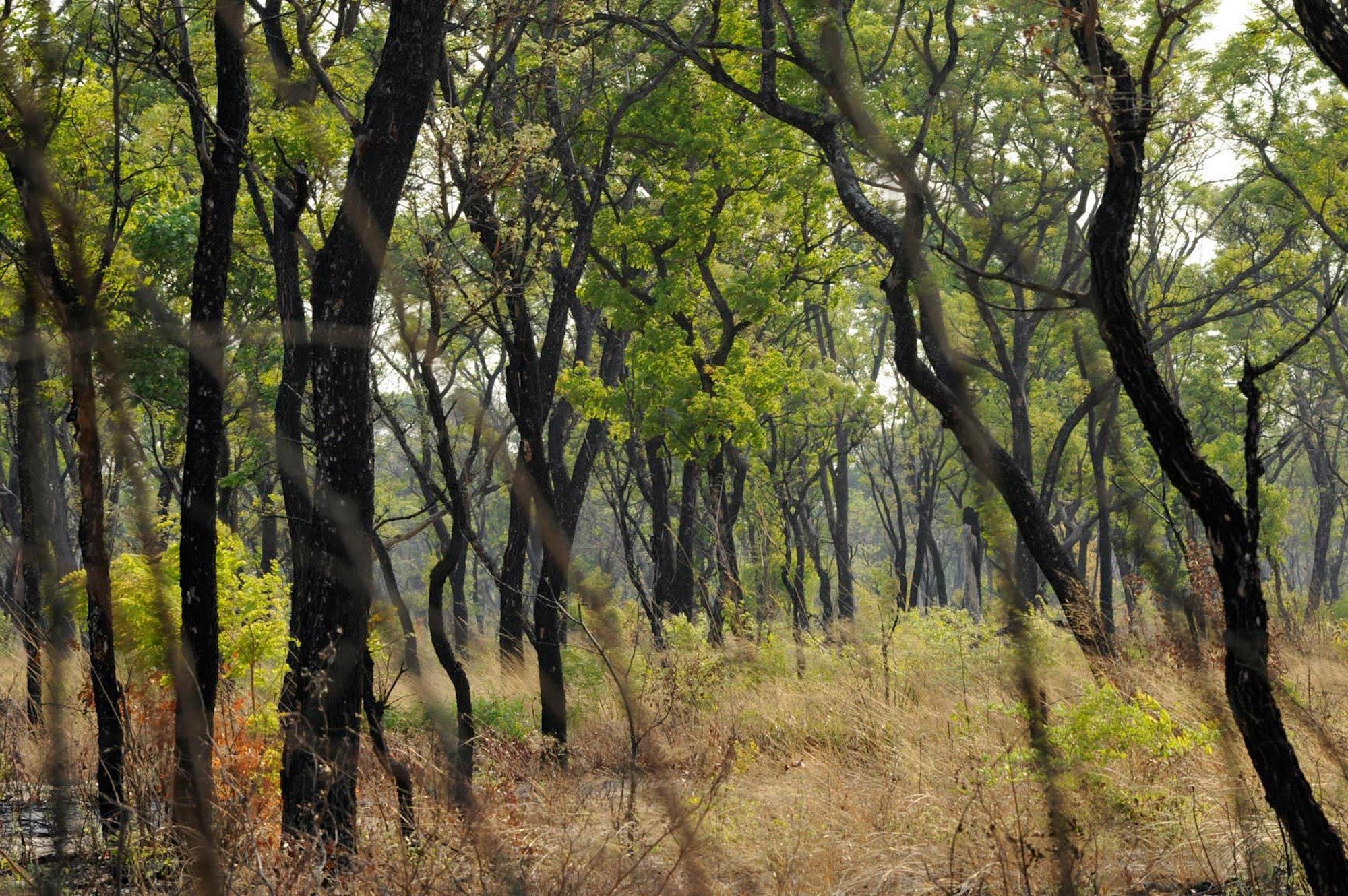
Forest cover in Namibia was once much greater than it is now. With population growth requiring timber for building traditional houses and the rapid commercial exploitation of species such as Zambezi Teak and Kiaat, forest reserves were in severe danger. Additionally, climate change is an increasing concern in Namibia, as well as the rest of the world, so the maintenance of forests as carbon sinks is particularly important.
Namibia’s north-eastern forest areas are part of southern Africa’s Miombo Woodlands. These are not dense forests, but woodlands and bushy savannahs. They are ecologically important for carbon storage, their capacity to retain soil and prevent erosion, and for hosting a wealth of biodiversity. Namibia’s valuable plant resources are not only confined to the woodlands in the north-east; many plant species in different habitats throughout the country provide economic opportunities in rural areas, provided they are used sustainably. Protecting these resources through sustainable utilisation is the key role for community forests.
For articles on similar topics, please click one of the following options:
If you enjoyed this article, then you might also like:


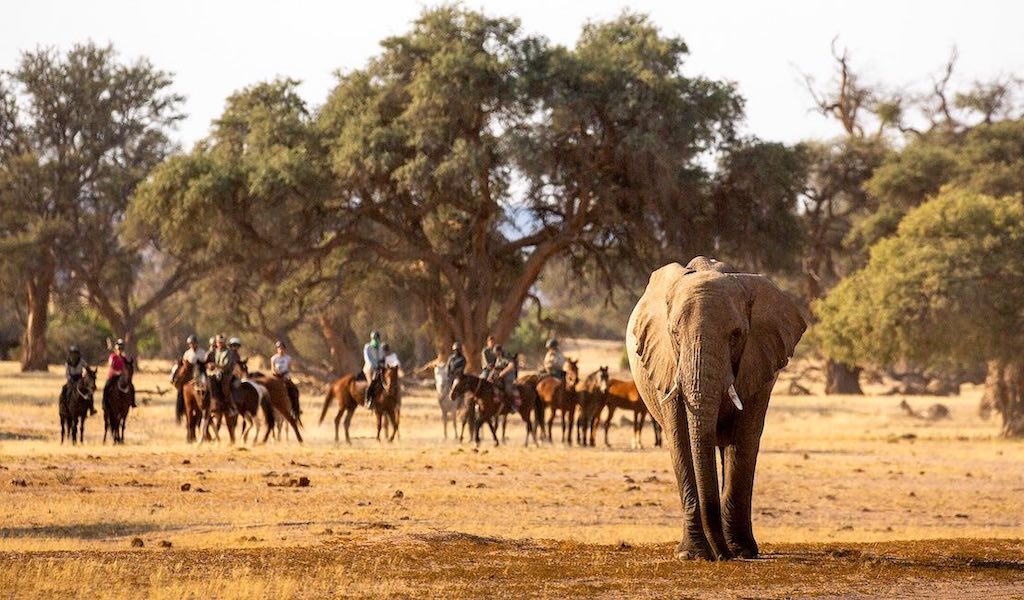
We use cookies to monitor site usage and to help improve it. See our Privacy Policy for details. By continuing to use the site, you acknowledge acceptance of our policy.